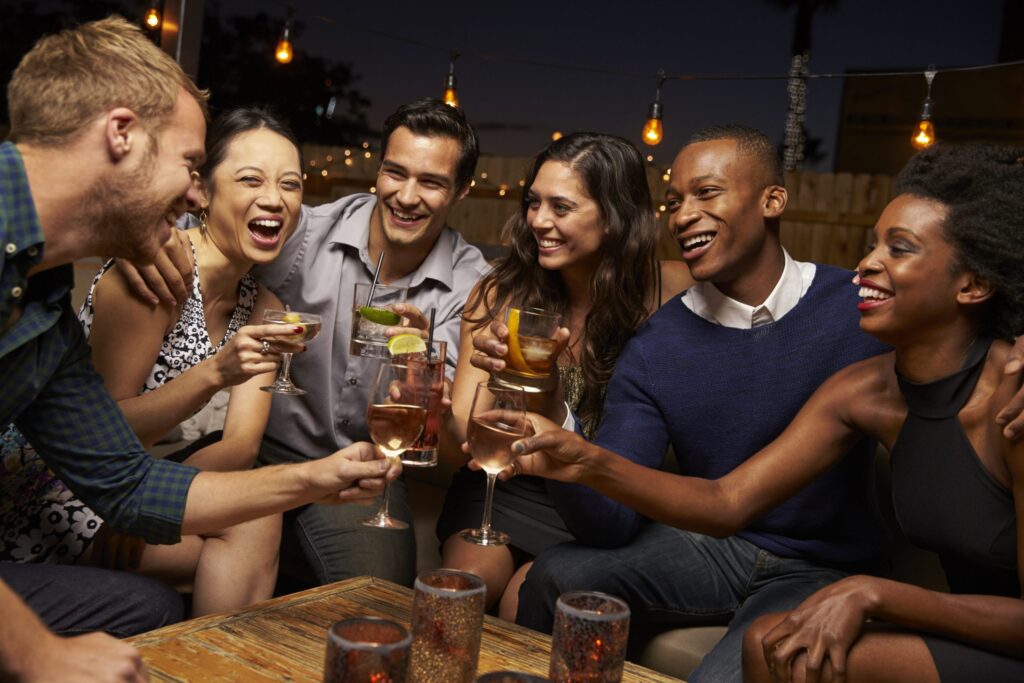Last week, at a Vinexpo Paris press conference in London, it was revealed what younger consumers want from wine, and why they are drinking less, but spending more than their parents' generation.
After we reported on Friday that the number of people under 40 who drink wine at least once a month has declined significantly over the past 10 years, and provided some reasons why this may be the case, it is now important that we turn our attention to… What the younger generation is looking for when it comes to drinks, especially wine.
This analysis stems from a presentation by Richard Halstead, chief operating officer at Wine Intelligence, as part of an event in the UK to share information on drinks trends ahead of next year's Wine Paris & Vinexpo Paris – which will take place in the French capital from the 13th to the 15th. February.
Titled 'The Battle of the Generations in the UK', Halstead said there were 'fundamental changes afoot in the wine industry and consumer base', before noting that the number of regular wine drinkers aged 18-39 had declined from 37% in 2010 to 26 people. % today.
As a result of this trend, he said, “wine drinking is very much an old man’s game,” before commenting that the challenge for the wine business is “remaining relevant to emerging consumers.”
How can this be achieved? To address this, Halstead highlighted some aspects of this demographic's tastes and desires that may help the wine business attract and retain consumers among younger age groups, which include Millennials (25-39) and Generation Z (18-24). , who currently make up 21% and 5% of 'regular' wine drinkers in the UK (with 'Generation , bottom).
In particular, Halstead relied on Wine Intelligence's consumer research to show that wine drinkers under 40 “enjoy trying new and different styles of wine on a regular basis”, and are “more likely to prefer seeking novelty” than “boomers.” Population. (55+) are “most likely to rely on habitual purchasing patterns.”
Also, while older consumers “focus mostly on functional attributes” – such as taste, relaxation, and food matching – younger wine drinkers are more likely to drink wine to “celebrate special occasions,” as well as to “share” and “create.” “. Warm and friendly atmosphere.”
In other words, for drinkers under 40, “wine is a social drink and one of some specialties,” Halstead said.
However, he noted that the decision to drink wine “depends on the type of occasion”, whether it is “prosecco before going out”, “or because wine is the theme of the evening”, before commenting, “It's unlikely to be my day; it's not a glass of wine.” At 6 p.m., because it's the end of the day, which is truer for older consumers.
Furthermore, Halstead stressed that wine “has to share space with a variety of other alcoholic beverages, especially spirits, ciders and cocktails” when it comes to younger consumers, which is also something the wine trade needs to take into account when it comes to styles. .
“If you see what younger legal drinking age groups are buying, such as cocktails and liqueurs, it is clear that the flavor profiles tend to be sweeter, with flavors that go more easily together,” he said.
He continued: “This is in contrast to Old World-style red wines with structure and tannin, so there is an interaction issue – younger consumers are used to drinking things that are easier on the palate.
While Halstead added that “it's always been that way,” with people's tastes changing as they get older, he also noted that “there are a lot of options” when it comes to wine alternatives, making it difficult to attract people to the category, even as it evolves. their tastes with age.
In fact, it is the development of a more competitive beverage category that explains why fewer younger consumers are drinking wine regularly, along with other trends, such as a growing focus on healthy living as well as a more cautious approach to alcohol because “drinking in moderation very important”. Great, but drunkenness is not.”
As for those under 40 who are regular wine drinkers, Halstead shared some news that should be taken as positive for producers, especially those producing the highest quality, sustainably produced wines.
Noting that wine-drinking Millennials in particular tend to “participate in the wine category because they really love wine,” he said this age group is confident in their knowledge, eager to try different types of wine, and willing to spend more per bottle. On average compared to those over 55 years old.
“Drinks that appeal more to people will work, but it won't be about selling more sheds, it's about merchandising a more interesting product,” he said, after noting that consumers aged 18 to 39 may only account for 26% of total sales. Residents drink wine on a regular basis, but 34% of total spending is spent off-premises.
This higher spending per bottle among younger drinkers is linked to a number of factors, according to Halstead, including “a little splurge,” as well as the fact that “price is a safety valve for younger consumers,” who are “trying to buy.” Interesting product too,” which tends to be organic, and comes from a specialty retailer — other factors that tend to push these consumers into purchasing more expensive bottles.
More generally, Halstead noted that disposable income tends to peak when a person is in their 30s, before costs like children and mortgages come into play.
As for what young wine drinkers spend their money on, Halstead stressed that there is a huge demand for soft and rosé drinks, because such sectors are “easy to understand, provide reliability, because they are highly branded.”
“We can also see that natural wine is as important or greater for those who are younger, but for those over 55, they may demand their money back,” Halstead commented.
Finally, Halstead notes that younger consumers are more interested in alternative formats, from semi-bottles to large cans or “eco-containers,” adding that there is “an appetite for alternative packaging among younger people that we don’t see.” Among major wine drinkers.”
In short, Halstead said: “If you are a mass wine producer, your primary target now is those over 40, who drink wine more regularly and in larger quantities, than those in a younger age group.”
But, with the 55+ age group being “more value-oriented” and “creatures of habit”, the opportunity for “niche products and more premium products” falls to Millennials and Generation Z, especially when sold through pubs, bars and restaurants – with the former age group showing a “particularly high willingness to trade within the company.”
Finally, Halstead said younger consumers are interested in a “much wider range of products,” which means “wine will never be easy again.”
However, with millennials and Gen Z drinkers more confident in purchasing and learning about wine online, he said it is possible to engage with them through engaging digital marketing. “If you have a good social media strategy, you can speak to this group,” he concluded.
Key takeaways from the presentation, according to Richard Halstead, COO at Wine Intelligence
a. Boomers (55+) and Generation X (40-54)
Boomers and Gen These two groups account for 73% of the wine drinking population and 66% of all off-premise spending. Their focus on wine drinking is on the informal and functional (taste, food matching, relaxation). They have routine buying patterns at entry and intermediate price points. Generation
B. LDA Generation Z (18-24) and Millennials (25-39)
LDA Gen Z and Millennials are the main targets at the facility and for premium and ultra-premium wines. Both generations represent only 26% of the population who drink wine on a regular basis but account for about 50% of total spending in bars, pubs and restaurants. For both groups, wine carries social values, sparking curiosity, engagement and higher levels of spending. LDA Gen Z tends to be price sensitive although they are willing to trade on social occasions. They also show particular interest in sweeter, rosé and sparkling styles of wine.
Number of people in the UK who drink wine
Boomers (55+): 48% Generation X (40-54): 25% Millennials (25-39): 21% Generation Z (18-24): 5%
Source: Wine Intelligence, Vinitrac® UK, July 2022 (n=1006) Regular wine drinkers in the UK
Read more
This is what the wine business really needs to worry about


